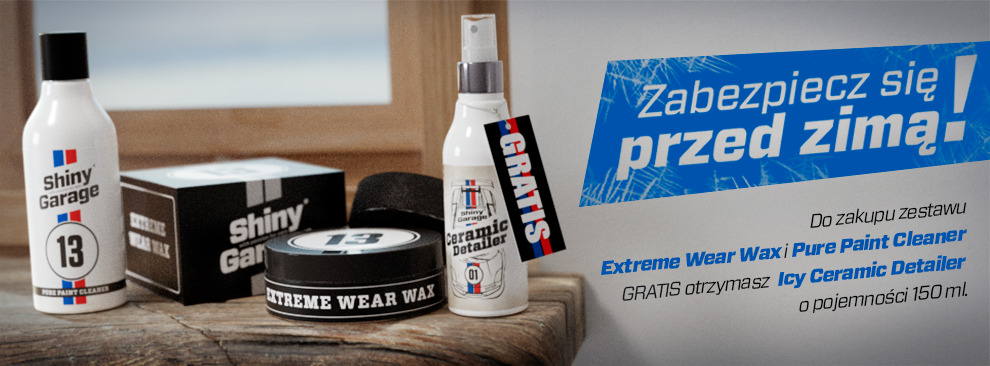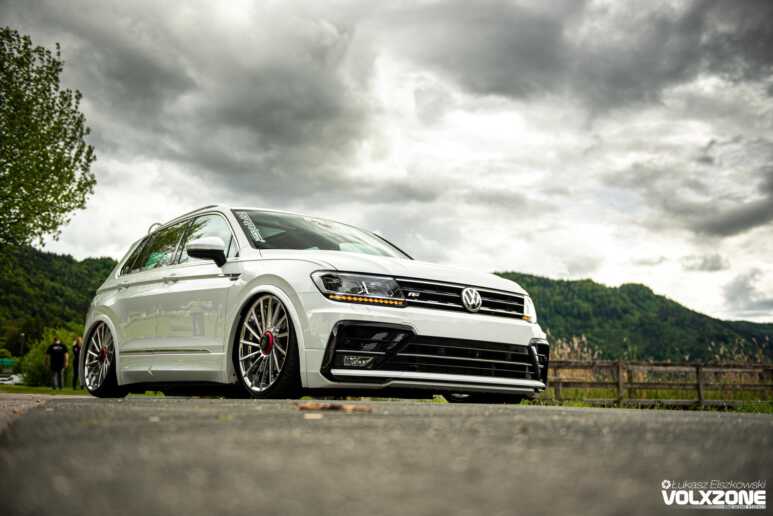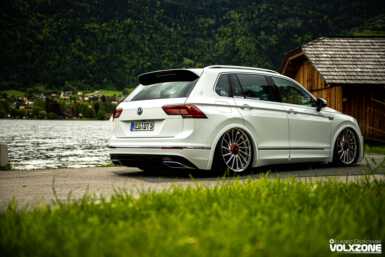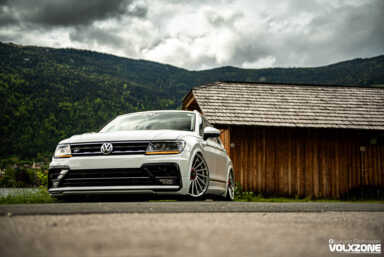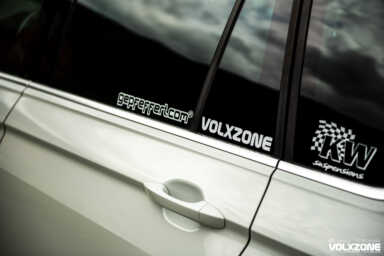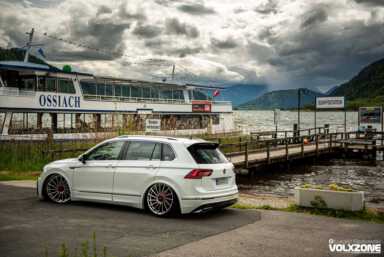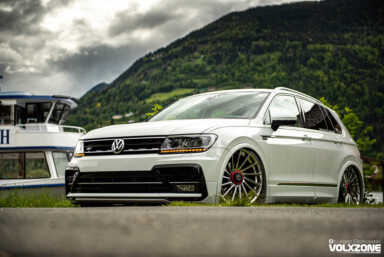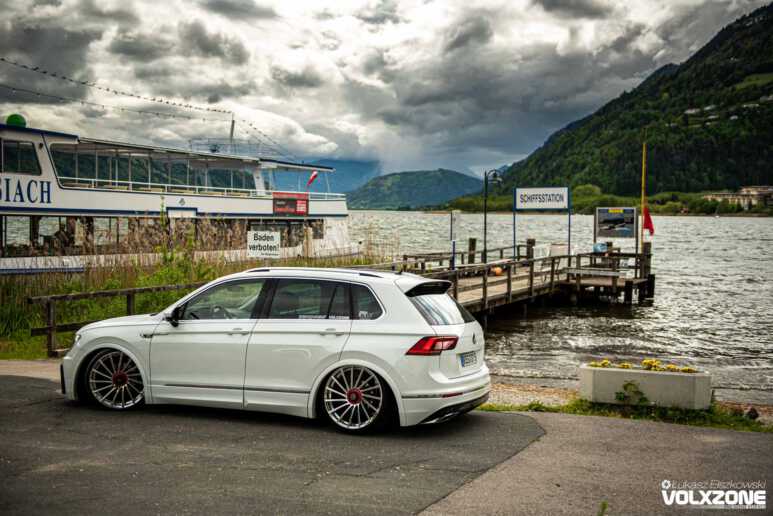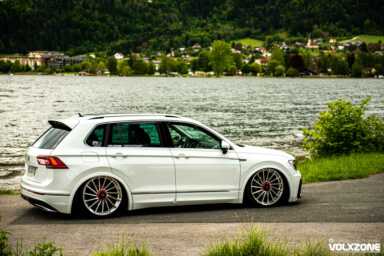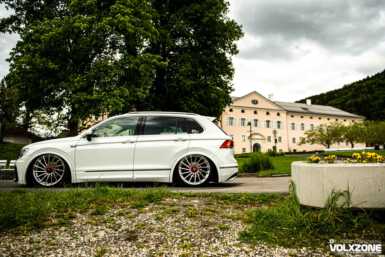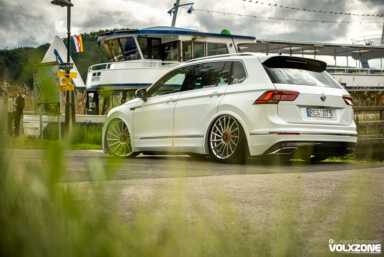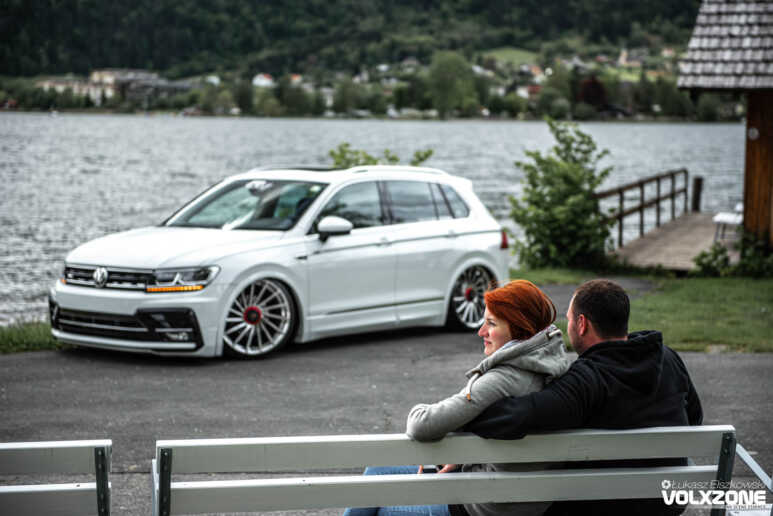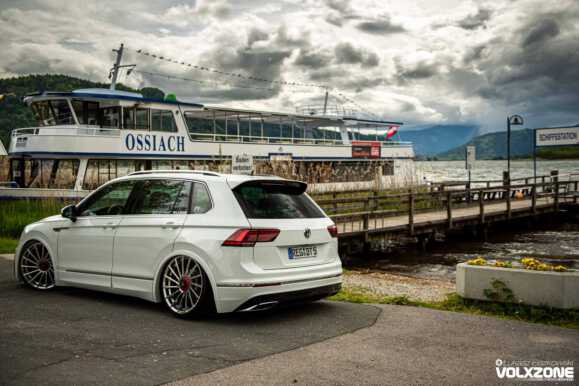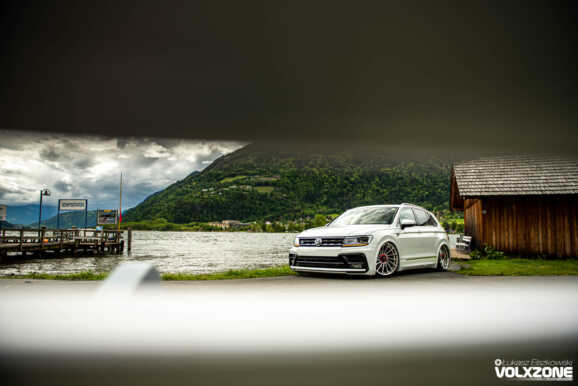
Za co stateczne głowy rodzin kochają SUV-y? Za lepszą widoczność, komfort jazdy, poczucie bezpieczeństwa, no i rzecz jasna możliwość bezstresowego jeżdżenia po krawężnikach. Zaraz, zaraz, że co?
![]()
Why do the stable heads of families love SUVs? For better visibility, comfort of driving, a sense of security, and of course the possibility of stress-free driving on curbs. Wait a minute, what?

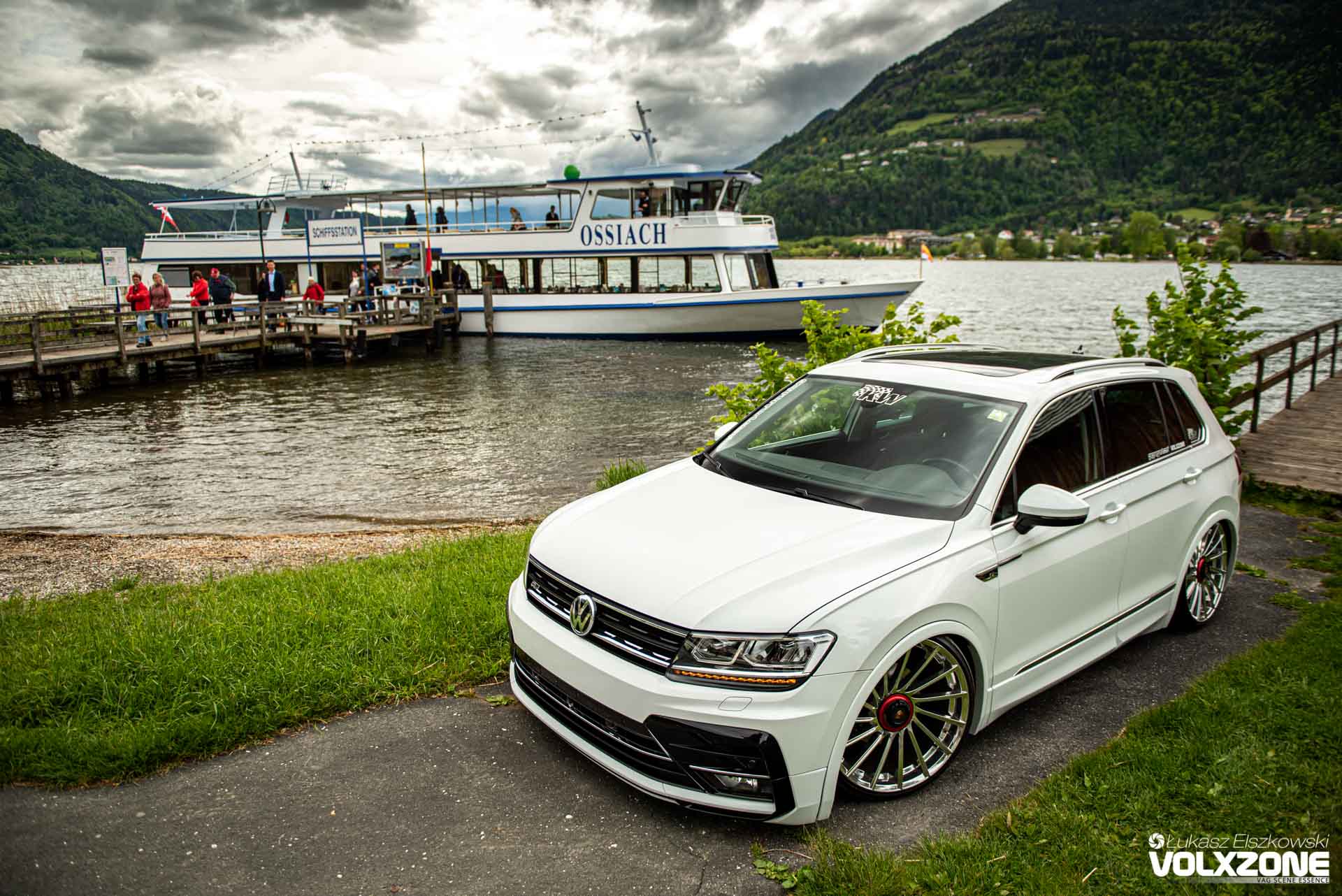
Zakup fabrycznie podwyższonego samochodu i obniżenie go do granic możliwości ma mniej więcej tyle samo sensu, co próba posadzenia trawy na pustyni- to się nie może udać. Rzecz polega jednak na tym, że to właśnie ludzie, którzy potrafią połączyć ogień z wodą i pogodzić na pozór wykluczające się cechy, zasługują na miano protoplastów czy legend. Tak samo sprawa ma się w przypadku sztuki, nauki, czy tuningu (czyli połączenia dwóch wymienionych wcześniej dziedzin). Powiedzmy sobie otwarcie, że radykalne obniżenie SUV-a to pomysł, przy którym niejeden popukałby się w głowę i zdecydowanie polecił jego autorowi udanie się do najbliższego psychologa. Modyfikowanie aut polega jednak właśnie na tym, żeby tego rodzaju szalone idee wcielać w życie, a im są bardziej kontrowersyjne, tym często lepiej. Właśnie dlatego, kiedy nad Jeziorem zobaczyliśmy białego Tiguana, którego właścicielem jest Simon Stracker, od razu wiedzieliśmy, że mimo niewielkiej liczby zmian, ten samochód w pełni zasługuje na małą wzmiankę na łamach VOLXZONE. Rzecz jasna nie zwlekaliśmy z tym pomysłem długo i wkrótce umówiliśmy się na sesję zdjęciową, której efekty możesz dzisiaj podziwiać. Z kolei na nurtujące Cię pytania odpowie sam autor, Simon:
![]()
Buying a stock car and lowering it to the limit has about as much sense as trying to plant grass in the desert – it will go wrong. The thing is, however, that there are people who can combine fire with water and reconcile seemingly mutually exclusive features that deserve to be called progenitors or legends. The same applies to art, science or tuning (i.e. a combination of the two areas mentioned above). Let’s openly say that a radical lowering of an SUV is an idea where many would knock on the head and strongly recommended its author to visit the nearest psychologist. Modifying cars, however, is just to implement these crazy ideas, and the more controversial they are, the better. That’s why, when we saw a white Tiguan at the Lake, owned by Simon Stracker, we immediately knew that despite the small number of changes, this car fully deserves a little mention in the pages of VOLXZONE. Of course, we did not delay this idea for a long time and we soon arranged for a photoshoot, the effects of which you can admire today. In turn, the questions bothering you will be answered by the author himself, Simon:
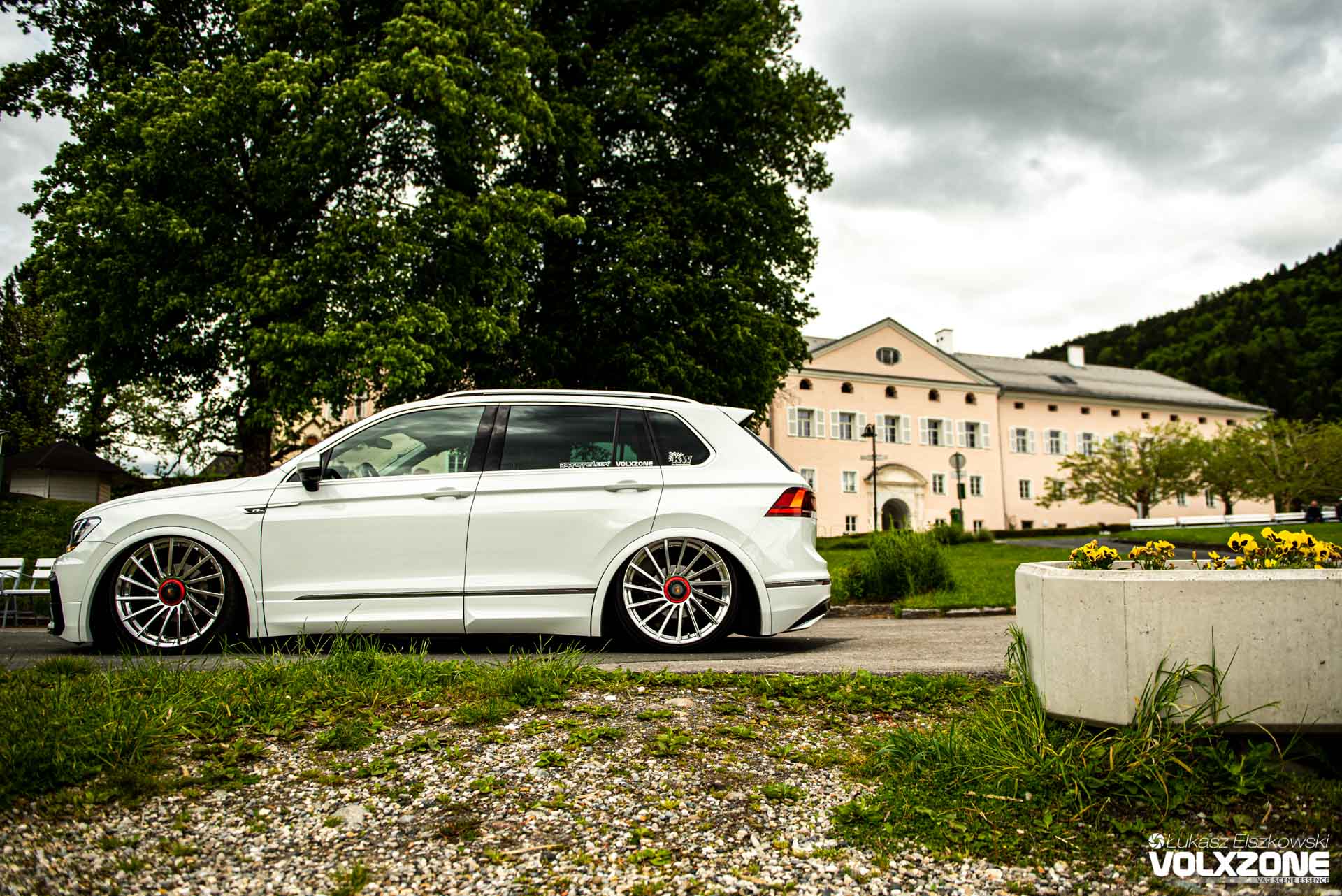
VXZ: Tiguan nie jest raczej pierwszym samochodem, który przychodzi na myśl podczas wyboru bazy na projekt. Skąd więc taki pomysł w Twoim przypadku?
S.S: Moim zdaniem to po prostu piękny i oryginalny model. No i w chwili gdy go kupowałem nikt nie odważył się jeszcze zbudować takiego na gwincie. Zawsze powtarzałem sobie, że przyjdzie dzień, kiedy kupię fabrycznie wysoki samochód, by móc obniżyć go tak mocno, jak to tylko możliwe.
![]()
VXZ: Tiguan is not the first car to come to mind when choosing a base for a project. So where does this idea come from in your case?
S.S: In my opinion, it’s just a beautiful and original model. And when I was buying it, no one dared to build one with a coils yet. I always told myself that the day would come when I would buy a factory SUV car so that I could lower it as much as possible.
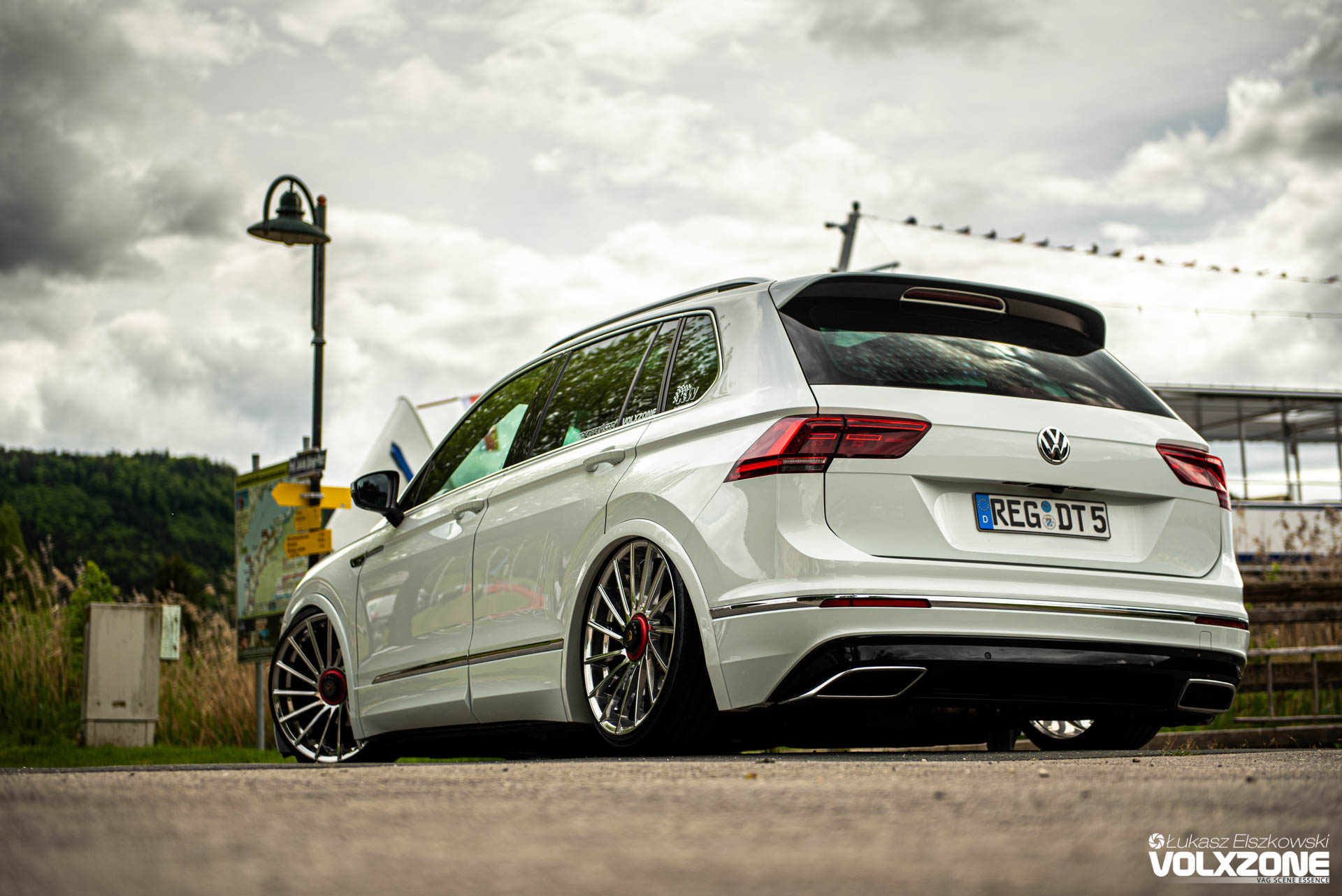
VXZ: Zakładam, że osiągnięcie takiego efektu nie polegało jedynie na montażu samych amortyzatorów i sprężyn. Co jeszcze zmieniło się więc pod spodem?
S.S: Samo zawieszenie to Gepfeffert V3. Do tego zastosowaliśmy inne przeguby z przodu, własnoręcznie wykonane cambery z tyłu i również samorobne górne mocowania kielichów z przodu.
VXZ: Co było najtrudniejszym etapem podczas budowy zawieszenia?
S.S: Wykonanie tylnych camberów.
![]()
VXZ: I assume that achieving this effect was not just about installing shock absorbers and springs only. So what else has changed below?
S.S: The suspension itself is Gepfeffert V3. For this we used other articulated joints at the front, hand-made cambers at the back and also self-made top cup fittings at the front.
VXZ: What was the most difficult stage during suspension construction?
S.S: Implementation of rear cambers.
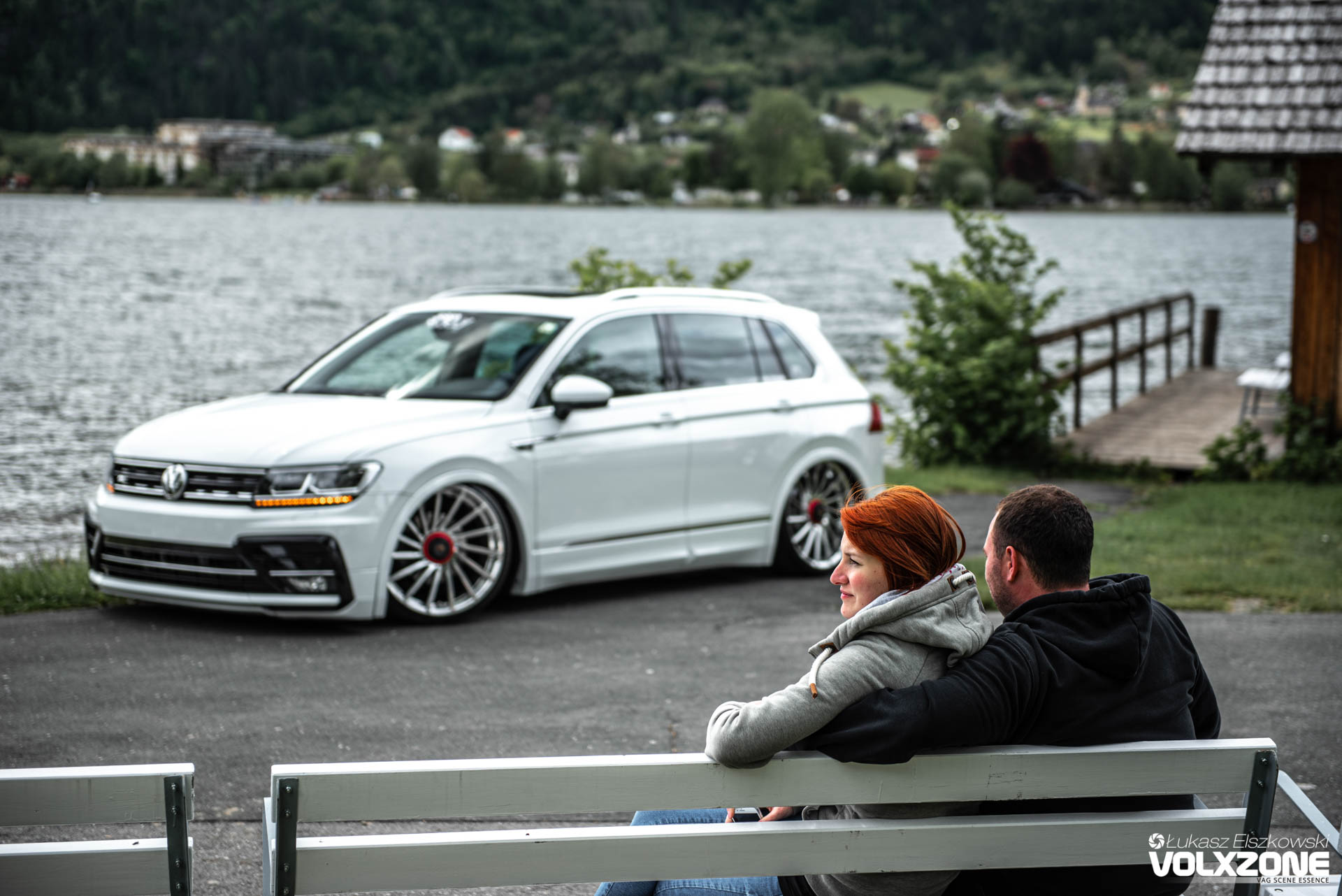
![]()
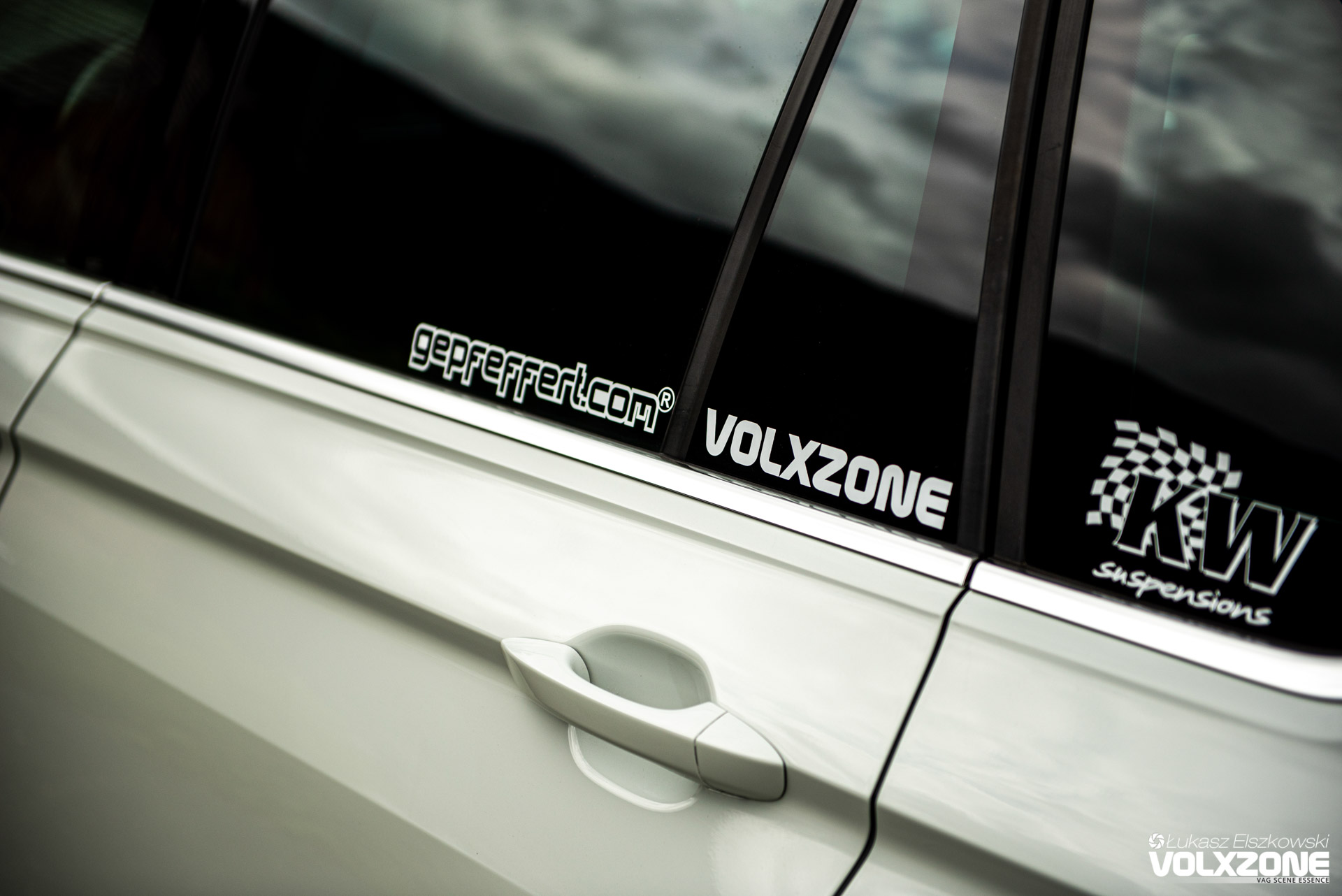
![]()
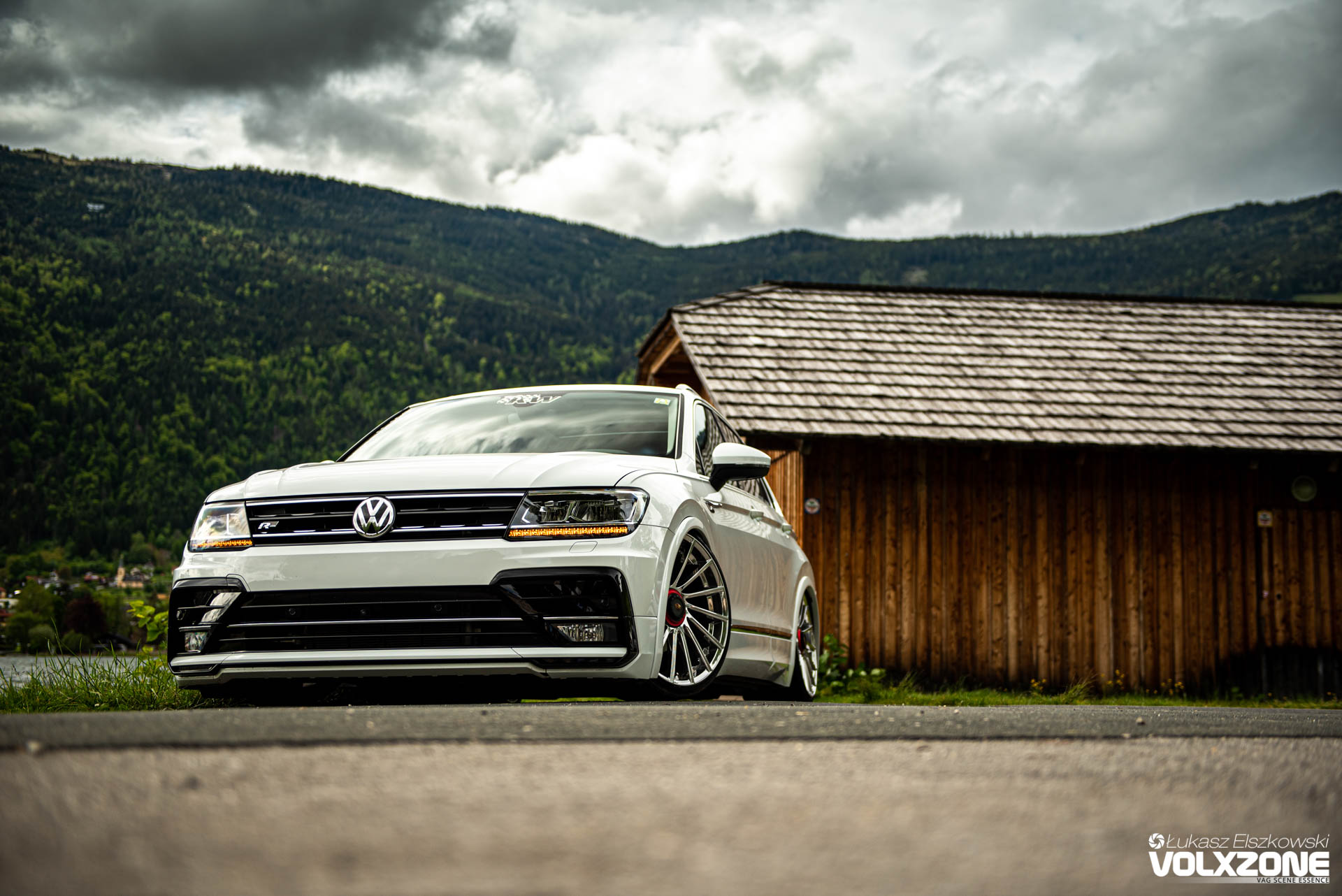
VXZ: Wizualnie także zmieniło się kilka drobiazgów. Jakie dokładnie elementy fabryczne Ci nie odpowiadały?
S.S: Nie jest tych zmian dużo: wygładziłem przedni zderzak, reflektory z wersji amerykańskiej, tylny dyfuzor z wersji Bi-TDI, nakładki nadkoli polakierowane pod kolor nadwozia, usunięta tylna wycieraczka.
VXZ: Visually, a few little things have changed. What exactly factory components did not suit you?
S.S: There are not many changes: I smoothed the front bumper, headlights from the American version, rear diffuser from the Bi-TDI version, wheel arch covers painted in body color, removed the rear wiper.
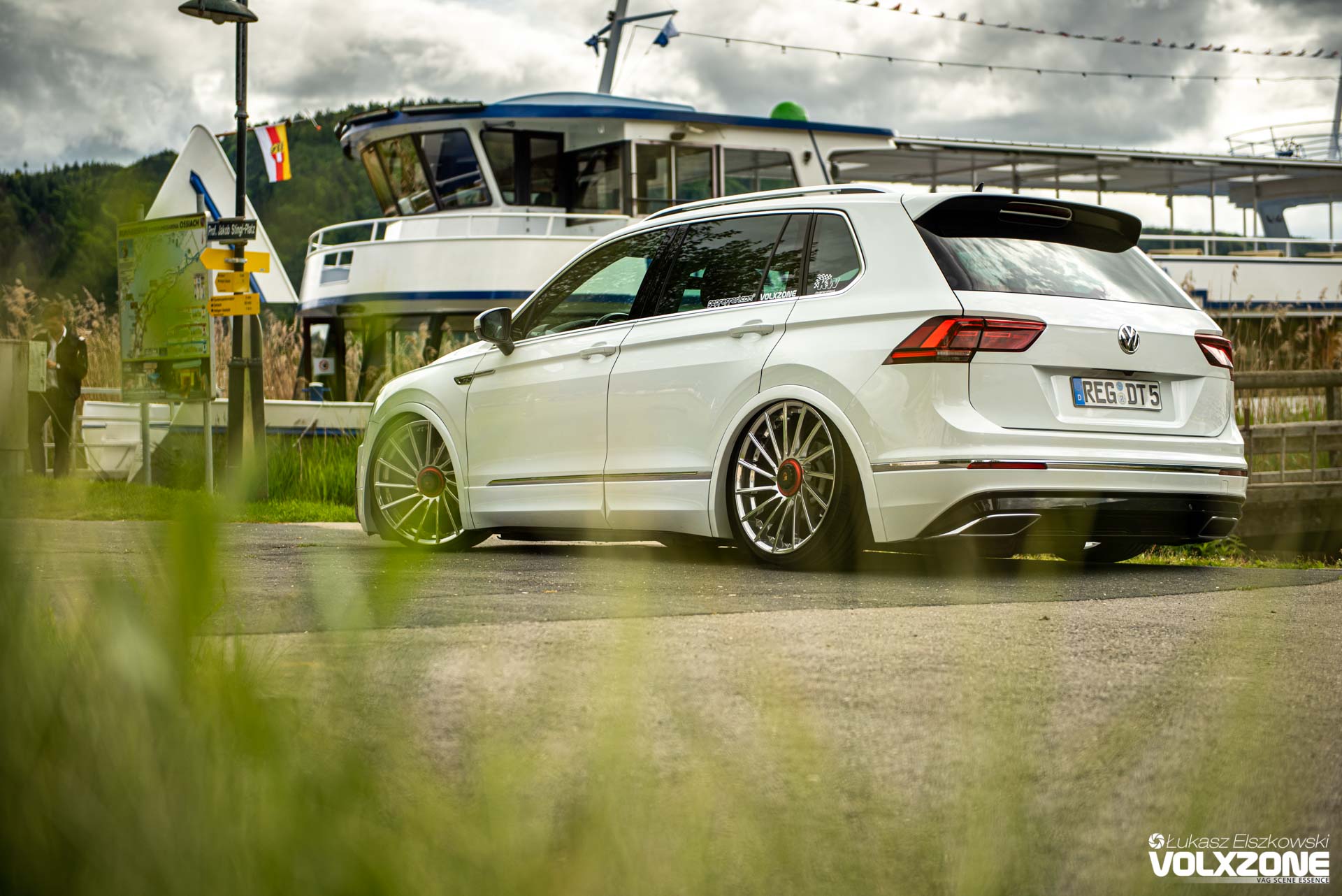
![]()
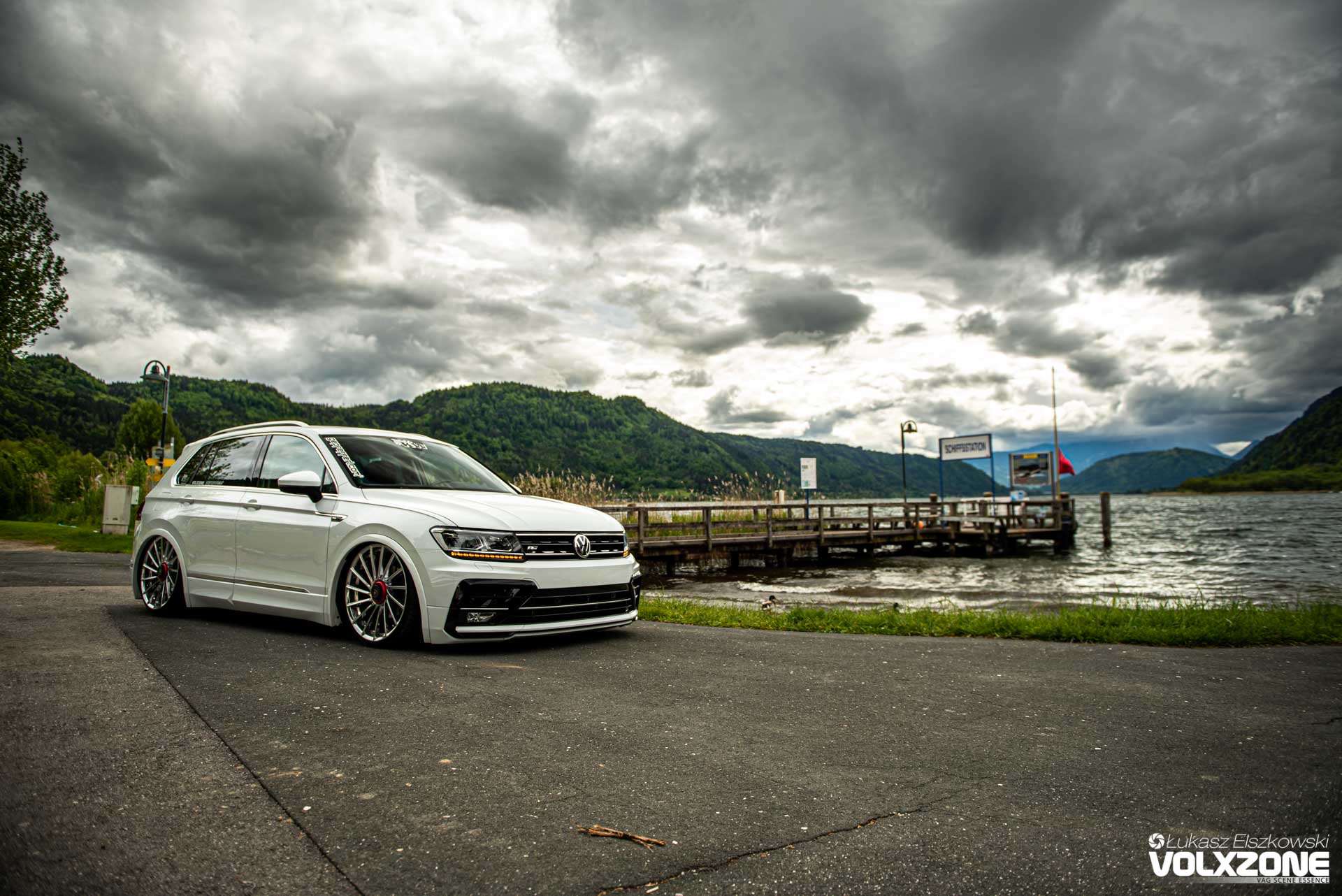
VXZ: Co jest takiego specjalnego w autach static, że uparcie idziesz akurat w tym kierunku?
S.S: Jestem mechanikiem w Gepfeffert.com, więc siłą rzeczy jestem zwolennikiem static. Z drugiej strony jest w tym pewna zabawa, bo jeżdżenie mocno obniżonym autem na gwincie jest trudniejsze, za to bardziej precyzyjne i przy dobrej jakości zawieszeniu jeździ się znacznie lepiej, niż na Airride.
VXZ: Z jakimi reakcjami Twój samochód najczęściej się spotykasz?
S.S: Wielu ludzi nie rozpoznaje tego auta, myślą że to Passat albo Golf Plus (śmiech). Niektórzy mówią, że auto wygląda jak shit, albo jakby było popsute (na przykład mój tata haha), większość jednak reaguje bardzo pozytywnie i mówi, że to niesamowity projekt. Sporo osób nie dowierza, że tym autem da się normalnie jeździć.
![]()
VXZ: What is so special about static cars that you stubbornly go in that direction?
S.S: I’m a mechanic at Gepfeffert.com, so I naturally support static. On the other hand, there is some fun in it, because driving a lowered car on a coils is more difficult, but more precise and with good quality suspension it rides much better than on an Airride.
VXZ: What reactions does your car most often meet?
S.S: Many people don’t recognize this car, they think it’s Passat or Golf Plus (laughs). Some say that the car looks like shit, or as if it was broken (for example, my dad haha), but most respond very positively and say it is an amazing project. Many people do not believe that it is possible to drive this car normally.
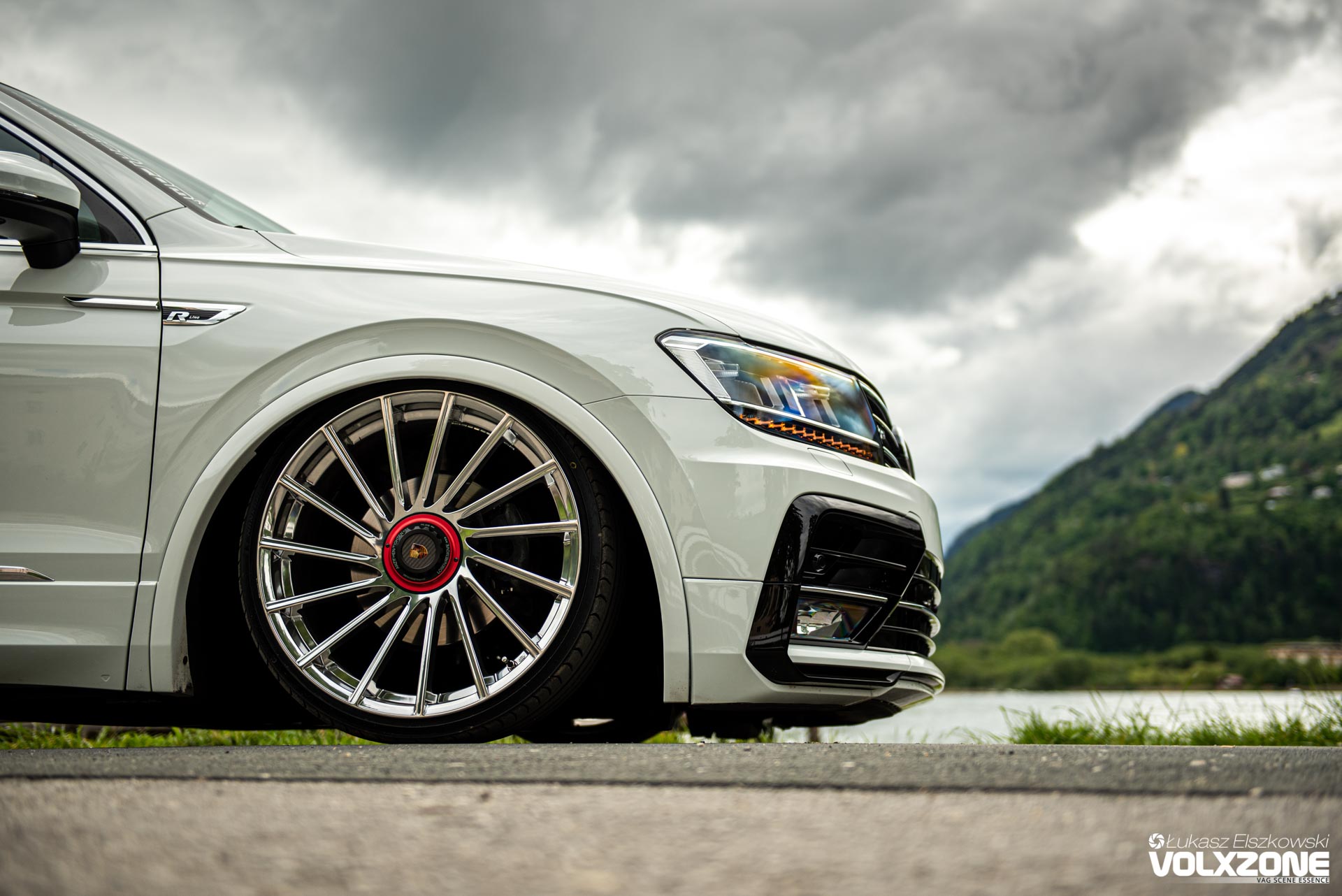
![]()
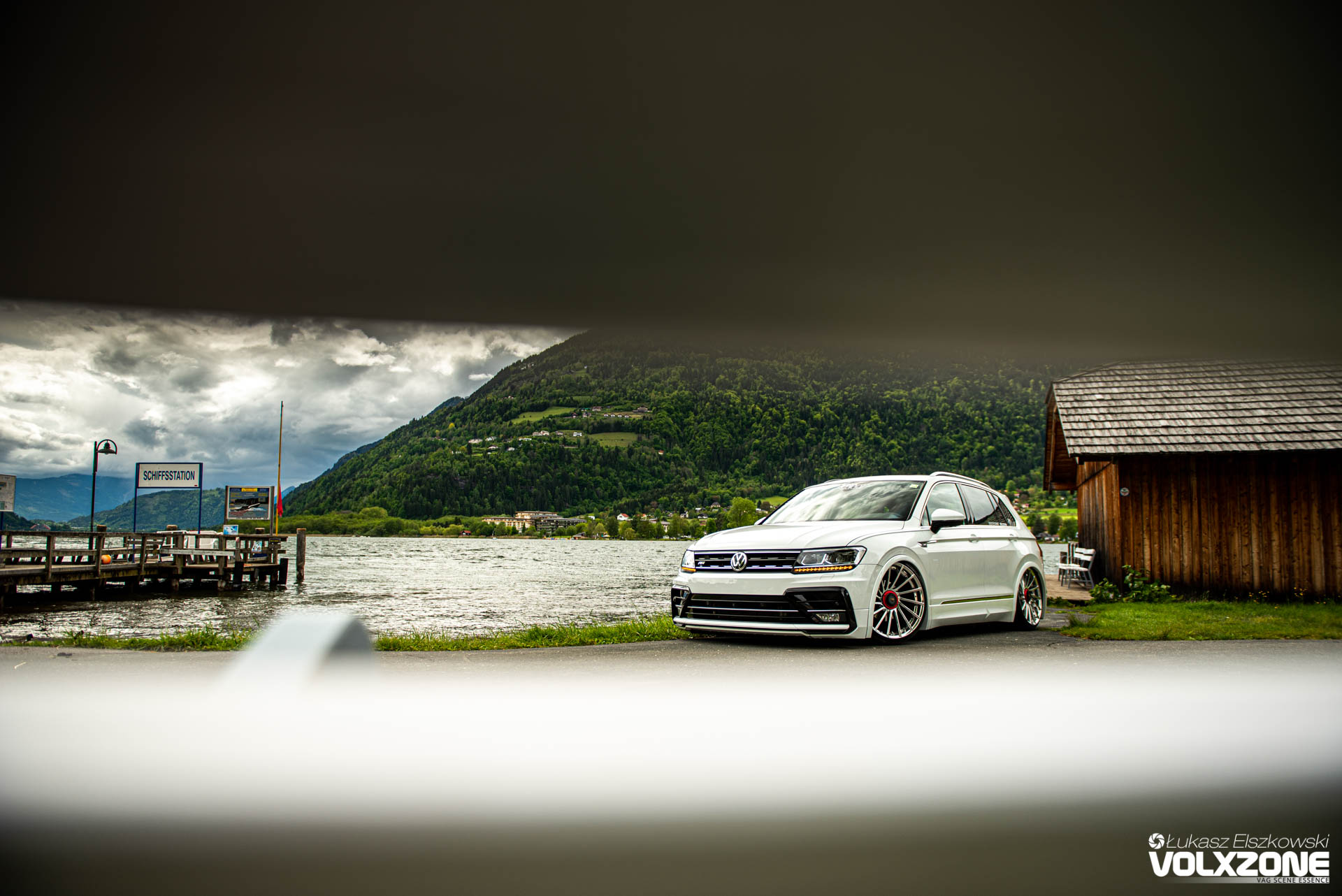
VXZ: Na tegorocznym Wörthersee Tour, a dokładniej na Swissbox Meet, spotkaliśmy jeszcze jednego białego Tiguana. Mimo, że był na zawieszeniu pneumatycznym, wysokość Twojego egzemplarza (a raczej jego niskość) wcale od niego nie odbiegała…
S.S: Tak, mieliśmy tę samą wysokość z przodu, zaś z tyłu… mój egzemplarz był jeszcze o dwa centymetry niższy. Dodatkowo tamten egzemplarz miał mniejsze o cal felgi (20”), więc automatycznie poszedł też trochę w dół.
VXZ: Masz jakieś plany na przyszłość związane z tym autem?
S.S: Może zmienię koła na 22” i założę zawieszenie z systemem HLS.
VXZ: Komu chciałbyś podziękować za pomoc w budowie?
S.S: Andy z Gepfeffert.com za zawieszenie, Sascha za lakierowanie i detailing, Thirteeneast za kapsle felg w stylu center-lock.
![]()
VXZ: At this year’s Wörthersee Tour, and more specifically at the Swissbox Meet, we met another white Tiguan. Although it was on air suspension, the height of your copy (or rather its lowness) did not differ from it at all…
S.S: Yes, we had the same height in the front, and back… my copy was two centimeters lower. In addition, that copy had an inch (20″) smaller rims, so it also went a little down.
VXZ: Do you have any plans for the future related to this car?
S.S: Maybe I’ll change the wheels to 22″ and put on a suspension with the HLS system.
VXZ: Who would you like to thank for help in building?
S.S: Andy from Gepfeffert.com for suspension, Sascha for painting and detailing, Thirteeneast for center-lock rim caps.
![]()
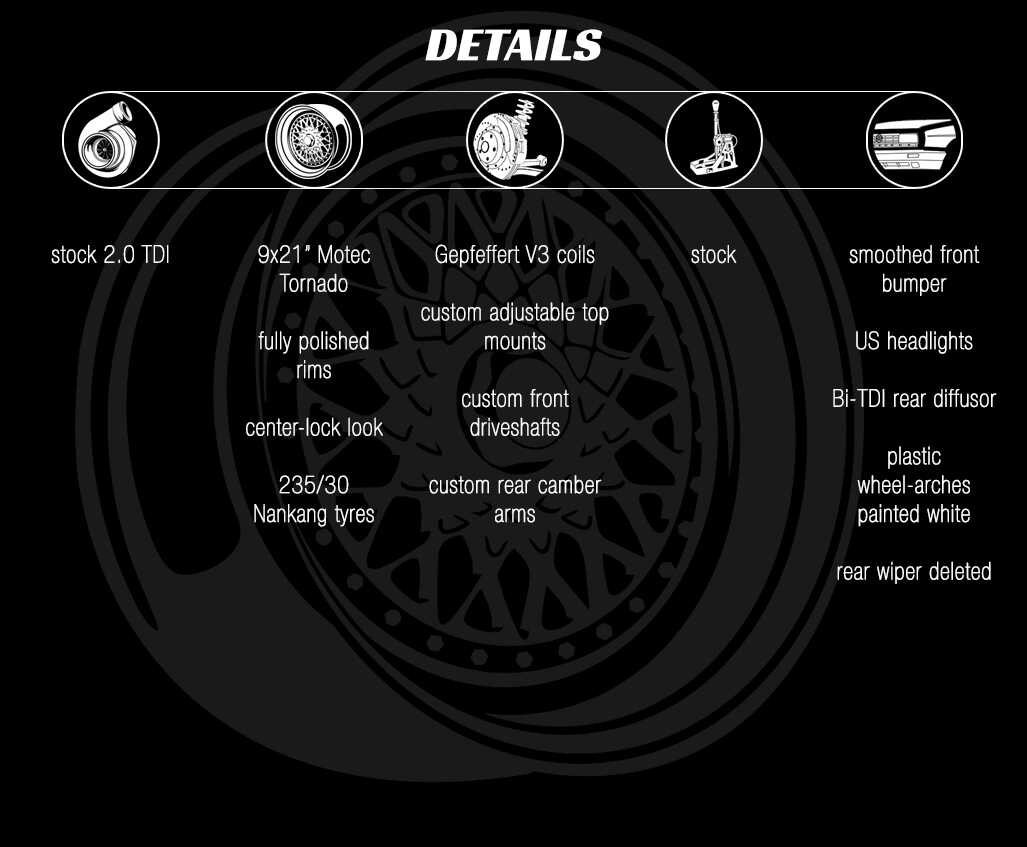

PEŁNA GALERIA | FULL GALLERY


